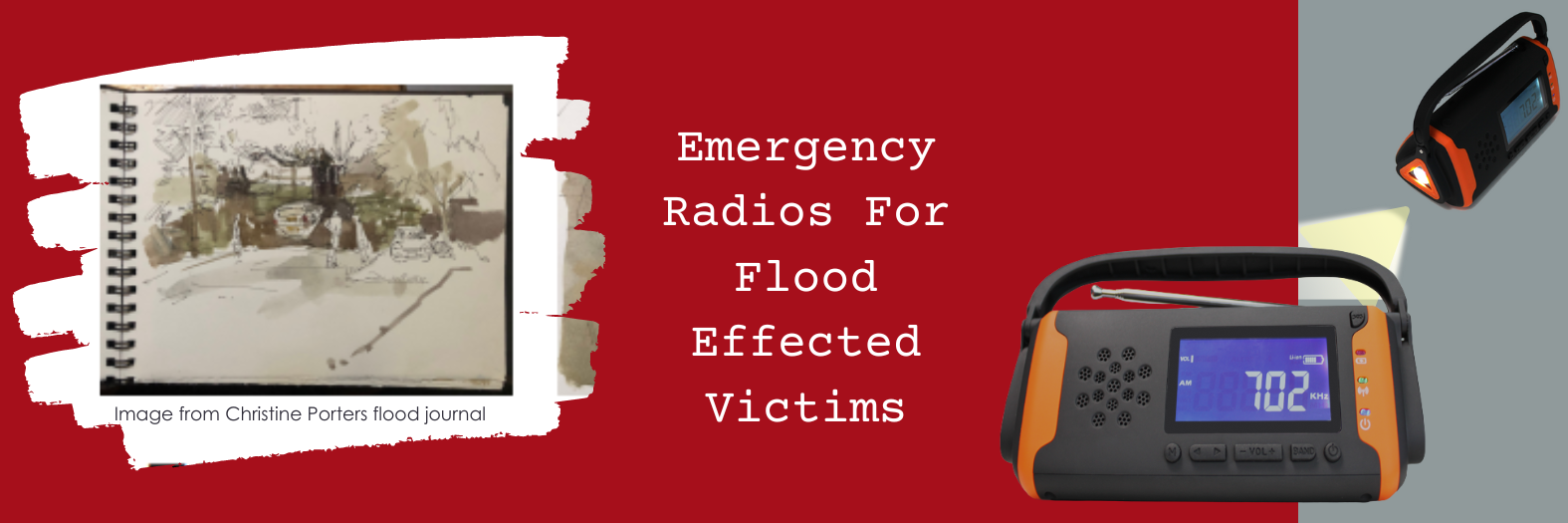
Even months after the flooding event in the NSW North coast we are still learning of tales of survival and loss.
While we read in amazement at 63-year-old grandmother Ann south of Eugowra in the Central west’s heroic fast thinking, helping her daughter and 6 day old grandchild into the roof cavity of her home while she stood on a stool with water up to her chin for four hours whilst also suffering pneumonia. Then sadly hearing her 75-year-old neighbour was not seen again after a rush of water hit the town. ( Source Smh.com.au https://bit.ly/3Bb2Evn )
It is also unfortunate that even at the time of writing flooding is affecting various areas of Victoria.
You may recall our blog about Lismore resident and artist Christine Porter who made it her mission to ensure elderly and less able people in that region receive an emergency radio. Not just a shortwave to listen to broadcasts, One with a flashlight, a beacon, and a solar and hand crank power source.
We were very proud to be able to supply our Best Emergency Radio units to her at a discount to contribute to this worthy cause. Click here to read the original blog on our website
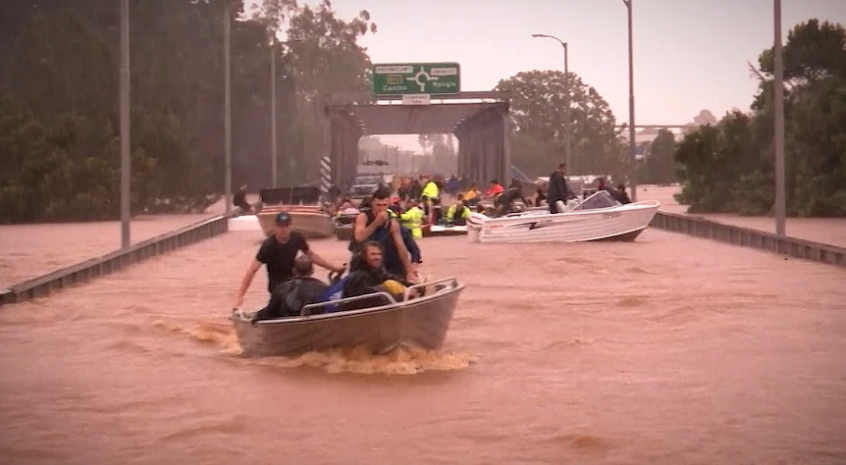
(Image of Lismore’s Ballina Street bridge became a rescue spot during its record-breaking flood in February.ABC News: Matt Coble)
Christine Porter was recently interviewed by ABC regional radio. We would like to share this recording with you as it is in fact incredibly insightful.
Here are our main takeaways from it.
Christine mentions that she discovered the emergency radio whilst helping out a friend who had lost everything in the floods.
As stories came out of people being rescued from their roofs, Christine thought about those who would not be able to easily climb onto their roofs.
In fact, right now think about how easy it may be for yourself to climb up on a roof. for many people, it is not that easy, particularly if there is a rush of water heading your way and everything is saturated, let alone if you had any form of ailment or mobility issue.
As we heard earlier retired nurse Ann Souths’ story, she managed to get her daughter and 6 day old granddaughter up through a manhole into a roof cavity. From inside this cavity, their calls could not be heard by any rescuers outside.
Christine confirms in her interview that the sound of the flood was so loud, you couldn’t hear people calling for help. This is one of the reasons she felt the flashing beacon and VERY loud siren were absolutely essential. Christine actually demonstrates the siren in the interview, it is effective, to say the least. Christine mentioned that she tested the flashing light and you could see it from half a KM away which would really help emergency personnel and the community locate you.
While for Ann south, they were fortunate to still have mobile phone reception, and her daughter was able to call emergency services who had a helicopter rescue them. Lismore was in fact without power for 7-8 days.
The Best Emergency radio has solar and hand crank power for charging. The hand crank is particular;y helpful if there is non stop rain and no sun to charge up the solar panels. A crank can get achieve minute or so charge on your phone to call or text someone in an emergency
When all the power was out it is important to receive radio, particularly emergency radio which has constant updates, As most Television will continue their regular broadcasts and apps need refreshing, not something you want to do too often when your battery is low.
Christine Porter remarks that during the February floods, water reached areas it has never reached before, it was fast and it was devastating. Although the community of Lismore are a resilient bunch, there is still an uneasy feeling every time it rains and the whole town is on edge.
Without power having a radio to listen to for updates is very reassuring for residents.
Christine Porter talks about the fact that even though she was on higher ground when it rained again she would feel uneasy herself and stay up all night listening to the radio for updates.
Listen to the radio interview here.
Want a Best Emergency radio for yourself or as a gift for someone who should have one? Click here to view the radio and all its features on our webstore.
Please note to receive orders prior to Christmas we recommend placing orders on or before the 10th of December.
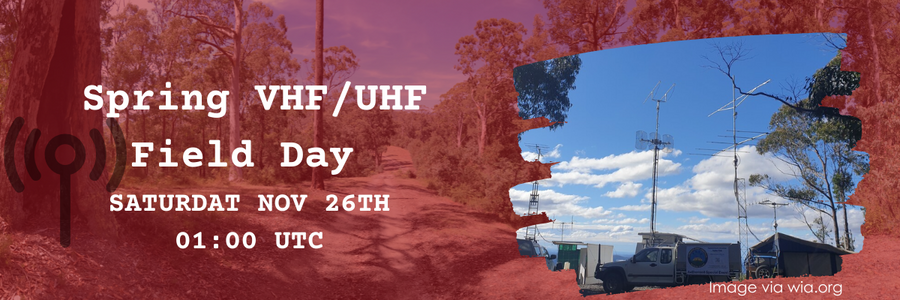
SPRING VHF/UHF Field day
Contest is this Saturday November 26th at 01:00 UTC ( around midday Sydney time)
Running for 34 years now, the VHF/UHF Field day was originally run as a trial in January 1989. It was very well received and consequently became an annual event. An additional event was trialled in Spring, a Spring Field day, which also proved very successful, so much so that a 3rd event was launched, the Winter Field day which was introduced in 2008
The duration of the Field Day is 24 hours and consists of separate sections for both group and individual entrants giving radio operators an opportunity to “head for the hills” to see how many stations they can work and from how far away.
It is possible to do very well with only modest antennas if you pick a good hilltop. Another option, if your station is easily transportable, is to operate from more than one location during the contest period.
Interestingly, the Field Days generate a lot of activity from home stations, so there is also a separate Home Station section.
All contacts must be simplex: There is plenty of FM activity, but one feature of the Field Days is a high level of SSB activity. (contacts through repeaters or satellites are not allowed).
Aim Of The Contest
The overriding aim is to get away for the weekend and have fun! But next after that, the aims are:
To encourage more activity on VHF and microwave bands;
To encourage people to work greater distances than usual by operating portable, and
To provide opportunities for people to activate or work into new grid squares.
Contest Rules
Full details of the contest rules are available in the “Files for Download” section below.
Contest Scoring
VHF-UHF Field Days employ distance-based scoring, using your 6-character Maidenhead locator (the Sub-Square).
Full details of the scoring system are set out in the Rules.
Further Information on Maidenhead Locators
Each four-digit Maidenhead locator (Square) identifies an area which covers one degree of latitude and two degrees of longitude. Detailed explanation of the Maidenhead locator system can be found in the Download section below. Also available is a computer program that can convert latitude and longitude into grid locators, and vice versa.
To find the six digit Maidenhead locator for any location, click this Link.
Submitting Your Log
Logs should be accompanied by a cover sheet, as described in the rules. A sample scoring sheet is available for download at the bottom of this page.
Only electronic logs in ASCII (.txt) format are accepted now, unless some disability necessitates a paper log, which must be submitted as set out in the Rules. Upload your log files to the Field Day website via this Link
Contest Results
The aim is to have results finalised approximately four weeks after the Field Day, with the results posted here, publicised via the usual WIA channels and then published subsequently in Amateur Radio magazine.
Contest Award
Each top-scoring station in every Section–Sub-section will receive a colour certificate in .PDF format, sent to the contact email address on their log cover sheet.
Top-scoring Foundation stations will also receive a colour certificate.
Logging Software
Any logging software can be used so long as the necessary information is included in the log. Please refer to the rules for details about this.
This information has been provided by the https://www.wia.org.au/ Wireless Institute of Australia all rights reserved.
The National Association for Amateur Radio in Australia
Click here for further information
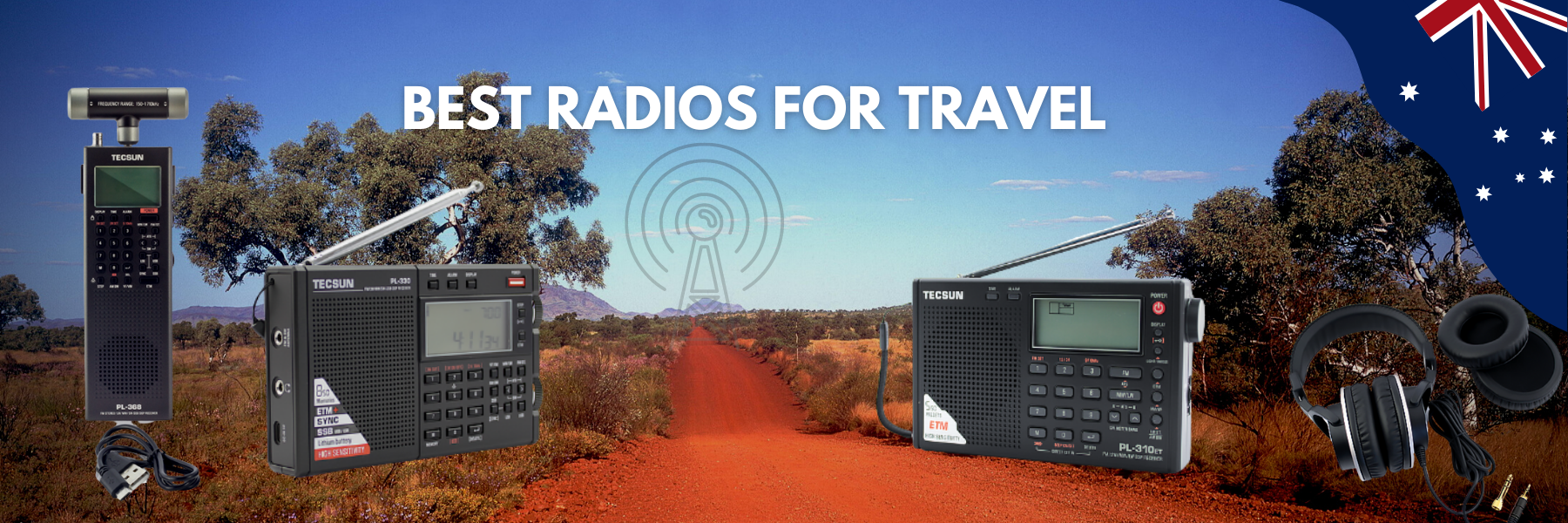
Australia is an incredible place to travel, essentially offering something for all tastes. Being the world’s 6th largest country by land area- Australia offers some of the most varied travel experiences and indeed there is something for all types of travellers’ tastes and budgets.
Whether you are after rainforest treks, snowy mountains, historic towns, country hospitality, desert explorations, sparkling harbour cities, or perfectly pleasant seaside retreats, Australia has it all.
Even prior to travel restrictions in recent years, Australians have been enjoying exploring what this beautiful country has to offer.
Communities of “grey nomads” and gap year families have hit the road for the ultimate adventure and unplug for a while and experience a simpler lifestyle while exploring nature and learning about this beautiful country.
Speaking of Grey nomads, also called “roving retirees” the top 5 most popular places to visit in Australia by this ever-growing group are The Whitsundays, Margaret River, Byron Bay, Mandalay Beach, Noosa, Wineglass Bay. All such relaxing sounding destinations. Are any of these on your list in the future?
With the summer fast approaching we will see a further increase in travelers, set out to tour this vast country, so we felt it fitting to feature our most popular radios for travel, particularly in the outback where there can be little to no reception.
This is where shortwave radio comes in. Shortwave radio travels much further than AM/ FM and broadcasts can be received over a distance of several thousand miles in places where there is little to no local reception.
We have a variety of radios available, like travel in Australia, we have something for all tastes and budgets!
Starting with The Tecsun PL310ET Multi-Band Radio
The Tecsun PL310ET Multi-Band Radio boasts features you would traditionally find on a much larger radio including provision for an external antenna, Digital Signal Processing (DSP), and selectable IF bandwidth which produces amazing audio performance from such a small receiver.
The Easy Tune Mode (ETM) ensures stations already stored in the receiver memory are not overridden when an automatic scan is conducted. Tecsun’s inclusion of ETM in the features of the PL310ET Multi-Band Radio make this model one of the most fully featured portable radios for travellers.
Features
- Alarm / Sleep Function
- Easy Tune Mode
- Digital Signal Processing for increased audio clarity
- Auto Tuning Storage with ETM
- AM / SW Selectable Bandwidth
- Direct Frequency Entry
- Dual Sleep Timers
- Signal Strength Meter
- External Antenna Socket (3.5mm)
- Headphone Socket (3.5mm)
- Battery Power Level Display
- Dimensions 141 x 87 x 30mm
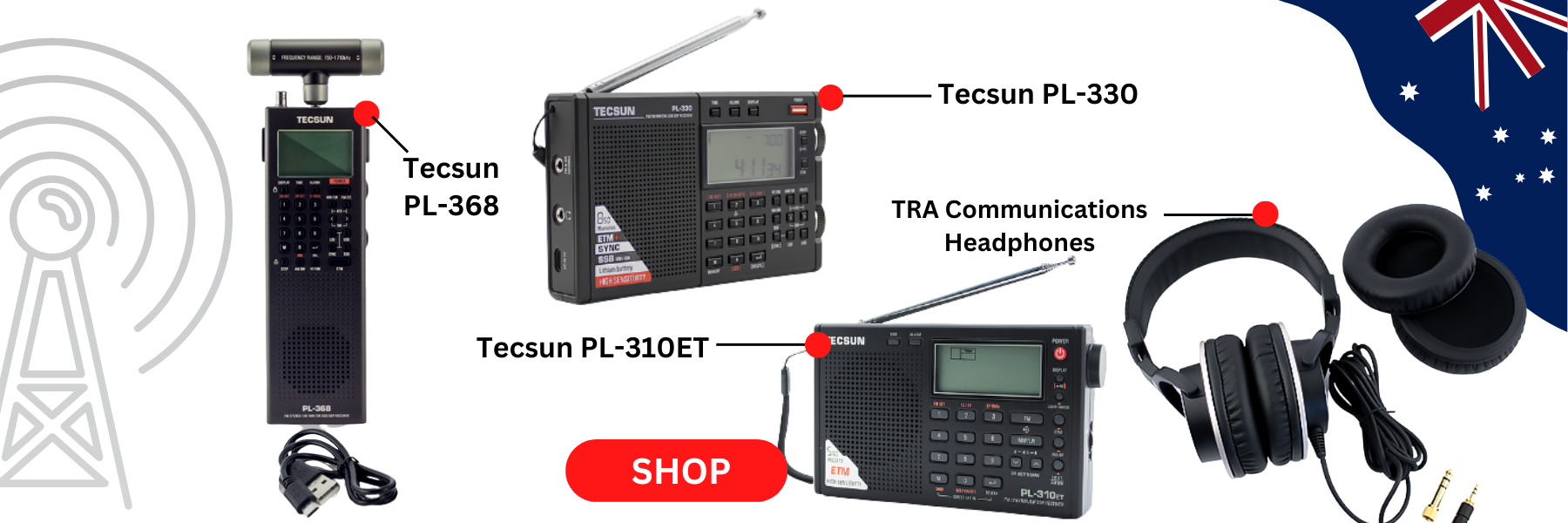
Next on the list is the Tecsun PL-368 DSP Handheld HF SSB Receiver is the latest hand held version of the popular PL-360/365 series of receivers. The form factor of this radio makes it very convenient to store in your grab bag or glovebox. This latest version includes a keypad for direct frequency entry, and a synchronous detector to help overcome fading on shortwave signals. The SSB capability offers 10Hz tuning steps. The external antenna socket operates on MW as well as SW, which is a great advantage for MW Dx’ers. Current stock has firmware version 3684 installed.
The Tecsun PL-330 is the latest pocket sized DSP portable receiver offering SSB capability. This feature, coupled with direct frequency entry makes the PL-330 the ideal radio for those wishing to listen to shortwave radio utility stations, amateur radio transmissions as well as regular shortwave broadcasts. The Tecsun PL-330 is powered by a BL-5C 1000mAh Li-ion battery offering up to 24 hours of continuous operation. The Tecsun PL-330 is the first receiver to offer ETM+, a search function that populates 24 time specific memories according to the hour of day in which the signal was received. For example, stations stored between 0900 and 0950 will be stored in memory E09. Using this system an individual ETM memory can be made for each hour of the day. Pressing the ETM button once the initial frequencies have been stored, automatically selects the frequencies previously stored at that time of day. The Tecsun Pl-330 also features AM synchronous detection of the shortwave bands, a feature rarely found on such a small sized receiver.
When you are on the road the community in many of the holiday parks is incredible, with many a social gathering, particularly in the evening time, which can often be during some of the best shortwave broadcast times. A great way to listen in privacy is with your very own set of TRA Communications headphones, featuring super soft memory foam that contours to your ear shape for the most comfortable listening experience.
In addition these headphones offer good dynamic range,which is achieved by the use of efficient 50mm NdFeB magnet drivers. The 3m connection cable means there is always sufficient length for headphone monitoring whilst engaged in other activities in your radio shack. These headphones can be used with any communicatons product with either a 3.5mm or 6.35mm stereo output socket. The durable, vacuum formed carry case, ensures your headphones are protected when not in use.


